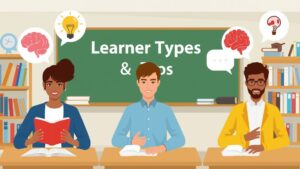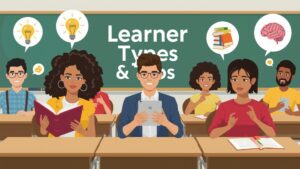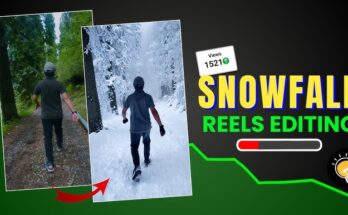What is Nature of Learning?
learning is an important process of human behavior. All living beings are in the process of learning. When we compare adults with a child we get to know how much learning took the difference between these ages. The change in the behavior, skills, habits, thoughts and sentiments. Constantly interaction of an individual with the environment. This experience makes him to change or modify behavior in order to deal effectively.
Therefore learning is a process of change in behavior on the basis of previous behavior.
Definition of learning
“Any sort of permanent change behavior that occurs as a result of practice and experience”.
The above definition of learning has three important elements to be discourse.
- Learning is a process of change in behavior that can be better or worse.
- Learning is the process of change that takes place through practice or experiences, but changed due to growth and maturation not be included in learning.
- This change in behavior must be relatively permanent, it must be present for a long time.
So, it is understood that are learning involved activities, and activities either physical or mental.
Types of learning
- Motor Learning
- Verbal learning
- Concept learning
- Discrimination learning
- Larning of principles
- Problem-solving attitude learning.
Nature and Characteristics of Learners – Tips for Effective Teaching

Understanding learners goes beyond just delivering content. A good educator must recognize the diverse nature and characteristics of learners to connect with them, motivate them, and make the learning process enjoyable and impactful. Below is a comprehensive guide on the key characteristics of learners and practical teaching tips for each.
🔹 1. Individual Differences
Nature
Every student is unique in terms of personality, intelligence, learning speed, background, interests, and needs. Some learners are visual, others are auditory or kinesthetic. Some grasp concepts quickly, while others need repetition.
Tip
Apply differentiated instruction. Use a mix of visuals, stories, group work, hands-on activities, and digital content to meet varied needs. Personalize assignments where possible.
🔹 2. Curiosity and Motivation
Nature
Most learners, especially young ones, are naturally curious. But curiosity and motivation can be affected by environment, teaching style, and content relevance.
Tip
Link lessons to real-life situations. Ask thought-provoking questions. Offer rewards, positive feedback, and recognition to boost motivation.
🔹 3. Readiness to Learn
Nature
Learners need to be mentally, emotionally, and physically ready to learn. Readiness depends on their background knowledge, emotional state, health, and interest.
Tip
Start with a quick check-in. Use diagnostic tools or pre-assessments to gauge readiness. Create a welcoming and supportive classroom environment.
🔹 4. Social and Emotional Development
Nature
Students are social beings. Their relationships with peers and teachers deeply affect their learning and behavior.
Tip
Encourage group activities, debates, and discussions. Teach teamwork and emotional intelligence. Build strong teacher-student trust.
🔹 5. Cognitive Development Stages
Nature
Learners’ ability to process information evolves as they grow. Younger students think concretely, while older ones can think abstractly and critically.
Tip
Adjust content to match their developmental stage. Use concrete objects and examples for younger learners, and critical thinking tasks for older ones.
🔹 6. Cultural and Linguistic Background
Nature
Culture and language shape how students interpret and respond to learning material. This affects engagement, comprehension, and participation.
Tip
Use inclusive teaching materials. Incorporate examples from different cultures. Be patient with language learners and offer translation or visual support when needed.
🔹 7. Attention Span and Focus
Nature
Attention spans are limited, especially in younger learners. Without engagement, students quickly lose focus.
Tip
Keep lessons short and interactive. Use humor, stories, games, or multimedia to maintain attention. Include breaks and quick recap activities.
🔹 8. Learning Disabilities and Special Needs
Nature
Some learners may face challenges such as dyslexia, ADHD, anxiety, or physical disabilities that impact how they learn.
Tip
Identify challenges early. Collaborate with parents and specialists. Use assistive technology, visual aids, and provide extra time or simplified instructions as needed.
Understanding the Nature and Characteristics of Learners: A Guide for Modern Educators

In the 21st-century classroom, teaching is no longer just about delivering lessons—it’s about connecting with learners. To do this effectively, educators must deeply understand the nature and characteristics of learners. This article explores how students learn, what makes each one different, and how teachers can respond to their diverse needs.
🌟 Why It’s Important to Understand Learners
Learning is a personal journey, and every learner brings a unique story. When teachers recognize this, they can build stronger relationships, improve classroom management, and increase academic achievement.
🔹 Key Characteristics of Learners
Here are the fundamental characteristics that define learners in any educational setting:
1. Learners Are Active Participants
Nature: Students aren’t empty vessels. They learn by doing, thinking, questioning, and experimenting.
Strategy: Promote active learning—use role-playing, real-world projects, debates, and hands-on tasks.
2. Learners Have Different Learning Styles
Nature: Some prefer visuals, others prefer sounds, reading, or physical interaction.
Strategy: Use the VARK model (Visual, Auditory, Reading/Writing, Kinesthetic) to design diverse learning experiences.
3. Learners Are Influenced by Emotions
Nature: Emotions affect focus, memory, and motivation. A happy student learns better.
Strategy: Create a safe emotional space. Be supportive, patient, and positive.
4. Learners Come from Diverse Backgrounds
Nature: Cultural, linguistic, religious, and socio-economic backgrounds shape learning behavior.
Strategy: Use inclusive language and examples. Celebrate diversity through activities and stories.
5. Learners Vary in Intelligence
Nature: Intelligence is multi-dimensional—logical, musical, linguistic, interpersonal, and more.
Strategy: Apply Howard Gardner’s Multiple Intelligences Theory to make lessons more dynamic.
6. Learners Need Purpose
Nature: Students want to know why they are learning something. Purpose drives motivation.
Strategy: Connect lessons to real-world relevance. Show them how it matters in life.
7. Learners Respond to Praise and Feedback
Nature: Positive feedback boosts confidence; constructive feedback helps improve.
Strategy: Use the “praise-suggestion-praise” sandwich method. Always be clear and kind.
8. Learners Develop Over Time
Nature: Learning is a developmental process—from simple to complex, concrete to abstract.
Strategy: Start with basics and scaffold lessons. Build complexity gradually.
💡 Quick Tips for Teaching Different Types of Learners
-
For visual learners: Use diagrams, videos, mind maps.
-
For auditory learners: Use lectures, songs, podcasts.
-
For kinesthetic learners: Use models, experiments, role play.
-
For shy or introverted learners: Offer written tasks or small group discussions.
-
For hyperactive learners: Include movement-based tasks and hands-on activities.
✅ Final Thoughts
Great teachers don’t just deliver lessons—they understand who is in front of them. Knowing your learners’ nature, strengths, and challenges helps build better lessons, stronger bonds, and lifelong learning habits. When education becomes learner-centered, it becomes meaningful.
✅ Conclusion
No two students are the same. Understanding the nature and characteristics of learners helps teachers create a more inclusive, dynamic, and successful learning experience. When educators adapt their strategies to meet these needs, learners feel seen, valued, and empowered to reach their full potential.



